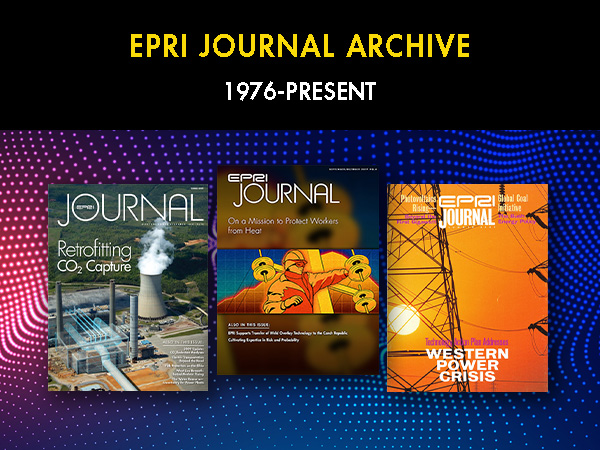2024 was a transformational year for EPRI and those in the energy sector. Together, we worked to prepare for a more connected, data-responsive, and grid-forward power future as demand forecasts raised prospects for rapid growth. These growing power needs dominated energy-related headlines in the last 12 months. Among drivers were AI-related data centers, transport electrification, industrial onshoring, and digitalization, which are turning demand forecasts sharply up for at least the next decade.
Our researchers and collaborators are working closely together to address these and other electric industry challenges and opportunities, including:
- Preparation and recovery related to increasingly extreme climate events
- A burgeoning nuclear power renaissance
- Grid-planning to meet electric vehicle charging needs
EPRI has been at the forefront of these and other issues critical to supporting and growing our electricity infrastructure. We are proud to share the following highlights of our 2024 efforts and progress, and we are grateful for our members and other collaborators’ continued commitment to science-backed solutions as we move into our shared future.
Preparing for AI’s Future
EPRI has been leading the work in addressing the surging power needs of data centers. In May 2024, we released a frequently cited analysis, projecting that data centers could consume up to 9% of U.S. electricity generation by 2030.
EPRI President and CEO Arshad Mansoor shared these findings with the U.S. Department of Energy’s (DOE) Secretary Advisory Board, which led to an AI and data center report from the group in July.
Then, in September, Mansoor joined fellow leaders from the technology, hyperscaler, and utility sectors at an invitation-only White House meeting with cabinet secretaries, informing them about the increasing power needs from data centers and what may be needed to ensure a reliable and affordable energy future.
Building on EPRI’s work in this space, in October, the institute launched the DCFlex initiative to explore how data centers can support the electric grid, enable better asset utilization, and assist with energy transformation. With a variety of utilities, hyperscalers, and data center operators as members, the effort will coordinate real-world demonstrations of flexibility in a variety of existing and planned data centers and electricity markets. The aim is to create reference architectures and provide shared learnings to enable the broader adoption of flexible operations that benefit all electricity consumers.
Nuclear’s Expansion
Nuclear generation is an energy source that has zero emissions and provides electricity around the clock, playing a key role as part of an affordable, reliable energy future.
EPRI provides guidance, R&D, and practical tools to help the sector increase capacity, deploy next-generation technologies, and develop the workforce of the future. Through expanding collaborations and innovation, we are making notable progress.
EPRI’s programs are supporting ambitious U.S. targets for increased nuclear capacity. In November, the DOE announced plans to deploy 200 gigawatts (GW) of net new nuclear capacity by 2050, which would almost triple current figures. This goal would likely be met by combining improvements at existing plants and introducing new technology, such as small modular reactors. EPRI’s nuclear research and subject matter experts are actively supporting these efforts.
Non-Nuclear Generation
EPRI’s Generation sector R&D is focused on a comprehensive range of non-nuclear energy-supply resources. These efforts include research on existing assets such as gas, coal, solar, wind, hydropower, and geothermal, along with advances in carbon capture and storage (CCS), energy storage, hydrogen, and other low-carbon energy carriers.
Energy Delivery and Customer Solutions
EPRI’s Energy Delivery and Customer Solutions sector works with members to integrate renewable sources, energy storage, grid-edge technologies, electric vehicles, and distributed energy solutions into the evolving electric landscape. We help clarify and guide power system complexities, from strategic planning and operations to end-use electrification and customer dynamics. Following are several of the initiatives that topped our 2024 to-do list:
Technology Innovation
As EPRI’s innovation engine, the Technology Innovation (TI) sector leverages fundamental science, exploratory research, and collaboration to help electric utilities move toward a decarbonized, sustainable energy future. These efforts also include new ways of looking at utility business models and fostering collaborative technology development.
Looking Forward
EPRI will continue its work in these and other research areas this year. You can look forward to learning more about them on the EPRI Journal pages as we drive innovation as part of an affordable, reliable energy future.

